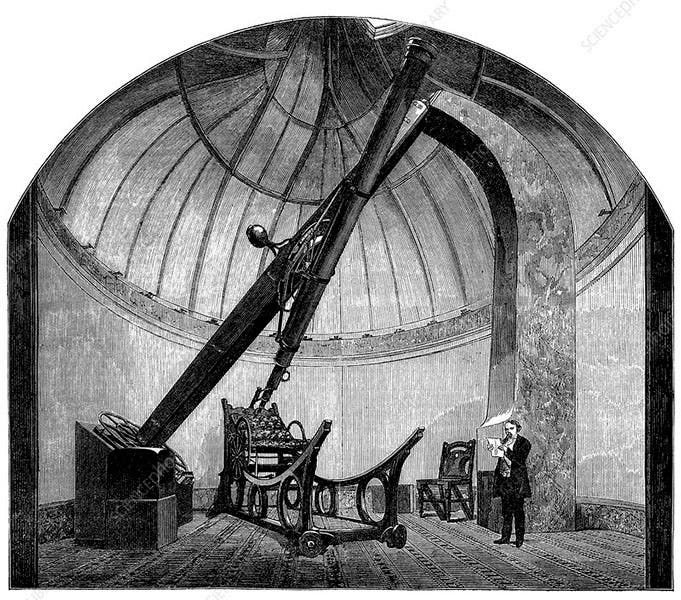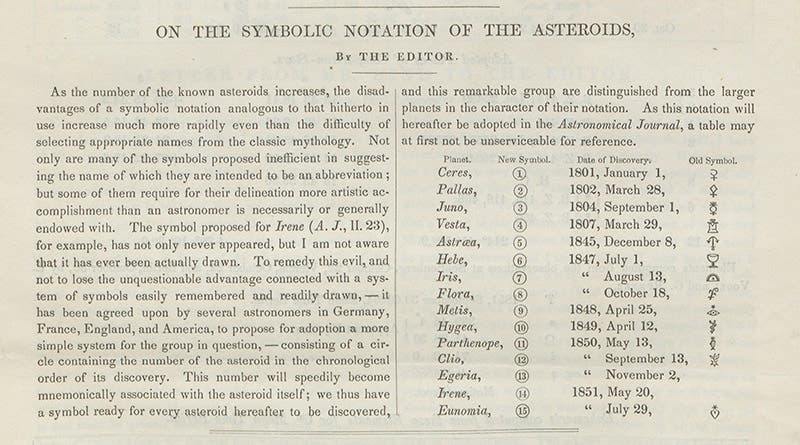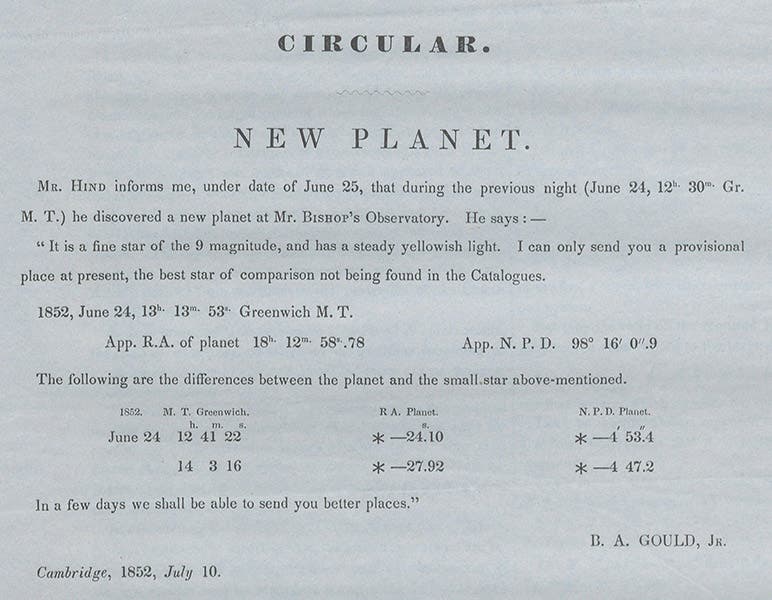Scientist of the Day - John Russell Hind
John Russell Hind, an English astronomer, was born May 12, 1822. He worked at the Greenwich Observatory for several years, when he was still a teenager, and then, in 1844, he was offered the position as director of George Bishop's private observatory in Regent's Park, London. Bishop was a wealthy gentleman who loved spending his money on astronomy but did not care so much for the observing part, so he hired others to use his telescope for him. Hind was happy to oblige, especially since Bishop's telescope, a 10-foot refractor with a 7-inch lens, was just perfect for Hind's own passion – looking for undiscovered minor planets, or asteroids, as they are popularly called (second image, just below).
The first minor planet, 1 Ceres, had been discovered on Jan. 1, 1801, and three more were spotted in the next 6 years. Hopes were high for even more, but for the next four decades, all further efforts to find new minor planets were unrewarded.. Then, in 1845, two more were sighted by a German astronomer, and the floodgates were opened. Hind was the one who opened those gates the rest of the way. He discovered ten minor planets between 1847 and 1854, now called: 7 Iris, 8 Flora, 12 Victoria, 14 Irene, 18 Melpomene, 19 Fortuna, 22 Kalliope, 23 Thalia, 27 Euterpe, and 30 Urania. As you can see by the gaps, he was not alone in this asteroid revival. But he was the most successful.
Hind's discoveries were announced as they were made in English astronomical journals, but we thought we would show you how they looked in the primary American serial for such purposes, the Astronomical Journal. Here is the announcement of the discovery of 14 Irene on May 18, 1851, as it appeared in an issue of the Journal (third image, just above). The editor of the Astronomical Journal was Benjamin Apthorp Gould, and he was quite diligent in keeping American astronomers informed as to what was going on in England and on the Continent. Gould also introduced an important improvement in minor planet nomenclature, as we can see in an entry published only a few months after the discovery of Irene (fourth image, below). It had been traditional for the discoverer of a new planet, even a minor one, to devise a symbol for that planet, since all the traditional planets had symbols (you know the one for Mars if you are male, and Venus if you are female). Hind dutifully followed this tradition. But discoveries were coming so fast that it was apparent to Gould that creating new symbols for each additional minor planet was becoming problematic, in that no one would be able to remember them. So he proposed using the number of the order of discovery as the symbol, and the table shows both the new and the old symbols. Four of the asteroids in the table were discovered by Hind.
Hind was the inadvertent inspiration for another innovation by Gould. Since there was a considerable time lag between astronomical discoveries and the publication of issues of the Astronomical Journal, Gould came up with the idea of the "circular" – a single page that could be printed up and mailed out to subscribers immediately whenever there was a discovery worth announcing. It would prove especially useful for comet and minor planet discoveries, where it is important that observers begin tracking the object immediately. We see below a detail of what I believe is the first astronomical circular, written by Gould and announcing the discovery of 18 Melpomene by Hind on June 24, 1852. The circular was printed on July 10 and mailed out at once. Circulars were in use right up through the 1980s, when email announcements rendered them unnecessary.
George Bishop published a book that covered Hind’s time at his observatory, Astronomical Observations Taken at the Observatory South Villa, Inner Circle, Regent's Park, London, During the Years 1839-1851 (1852), which we have in our collections. It is not especially memorable to look at, but it does have an attractive frontispiece, which shows the exterior of the observatory where Hind worked. When I return from a temporary quarantine, I will get this scanned and add it here a a sixth image.
Hind left Mr. Bishop's observatory in 1853 to become superintendent for the Nautical Almanac Office, where he continued until 1891. He left his exciting minor planet discovery days behind him.
Dr. William B. Ashworth, Jr., Consultant for the History of Science, Linda Hall Library and Associate Professor emeritus, Department of History, University of Missouri-Kansas City. Comments or corrections are welcome; please direct to ashworthw@umkc.edu.










